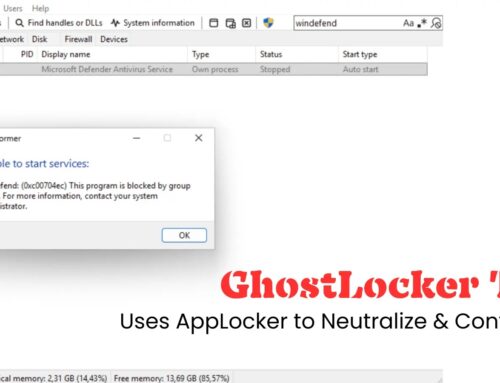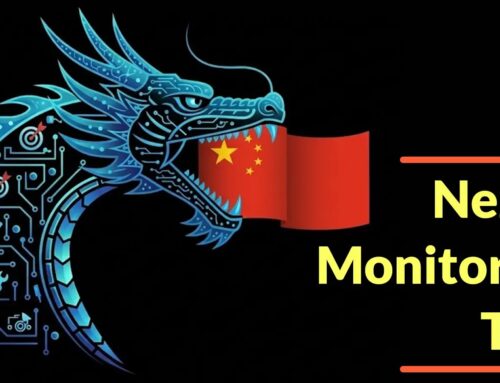
Discord Data Breach – 1.5 TB of Data and 2 Million Government ID Photos Extorted
A chilling revelation has emerged from the digital shadows, striking at the heart of user trust and data privacy: Discord, the ubiquitous communication platform, is battling an alarming data breach. This isn’t just about compromised chat logs; it’s an alleged theft of a staggering 1.5 terabytes of sensitive data, including over 2.1 million government-issued identification photos. The incident underscores the critical vulnerabilities inherent in third-party vendor relationships and the escalating sophistication of extortion attempts in the cybersecurity landscape.
The Discord Data Breach: A Deep Dive into the Allegations
The core of this crisis lies with a breach impacting one of Discord’s third-party customer service providers, Zendesk. Threat actors have claimed responsibility for exfiltrating a monumental 1.5 terabytes of data. What’s particularly concerning is the alleged inclusion of over 2.1 million government ID photos, typically submitted by users for age verification purposes. Discord, while acknowledging an incident, disputes the sheer scale of the claimed data theft, setting the stage for a tense verification process.
This incident transcends typical data breaches due to the nature and volume of the compromised information. Government IDs are prime targets for identity theft, fraud, and a myriad of other malicious activities. The potential exposure of such sensitive personally identifiable information (PII) puts millions of users at significant risk.
Understanding the Attack Vector: Third-Party Vulnerabilities
The breach didn’t originate directly within Discord’s primary infrastructure but rather through a third-party vendor, Zendesk. This highlights a persistent and growing challenge for organizations of all sizes: supply chain risk. Even with robust internal security measures, an organization’s security posture is only as strong as its weakest link, which often resides with external partners. The threat actors likely exploited vulnerabilities within Zendesk’s systems that handled Discord’s customer support data, gaining unauthorized access to the sensitive information stored there.
The specific vulnerabilities exploited have not been publicly disclosed, but common attack vectors against third-party providers often include phishing, unpatched software, weak access controls, or misconfigurations. Understanding these vectors is crucial for both organizations and individuals to bolster their defenses.
Impact and Implications for Discord Users
For the millions of individuals who have submitted government IDs for age verification on Discord, the implications of this breach are severe. The alleged theft of 2.1 million government IDs could lead to:
- Identity Theft: Malicious actors can use government IDs to open fraudulent accounts, obtain loans, or impersonate individuals.
- Phishing and Social Engineering: With access to personal details, attackers can craft highly convincing phishing campaigns targeting affected users.
- Increased Spam and Scams: Compromised data often leads to an uptick in unsolicited communications aimed at exploiting victims.
- Reputational Damage: For Discord, even if the breach occurred at a third party, the reputational fallout and erosion of user trust can be significant and long-lasting.
Remediation Actions for Individuals and Organizations
In light of this incident and the ever-present threat of data breaches, both individuals and organizations must take proactive security measures.
For Individuals (Discord Users):
- Monitor Financial Statements and Credit Reports: Regularly check for any suspicious activity or unauthorized accounts opened in your name.
- Enable Multi-Factor Authentication (MFA): Ensure MFA is enabled on your Discord account and all other online services, especially those linked to financial or sensitive data.
- Be Wary of Phishing Attempts: Exercise extreme caution with unsolicited emails, messages, or calls, especially those claiming to be from Discord or other service providers.
- Review Privacy Settings: Periodically review and adjust your privacy settings on Discord to limit the amount of personal information shared.
- Consider Identity Theft Protection: Services that monitor your personal information for fraudulent use can provide an extra layer of security.
For Organizations (Lessons Learned):
- Robust Vendor Security Assessments: Implement stringent security audits and continuous monitoring for all third-party vendors with access to sensitive data.
- Data Minimization: Only collect and store the absolute minimum amount of sensitive user data necessary for operations.
- Strong Encryption: Ensure all sensitive data, especially PII and government IDs, is encrypted both in transit and at rest.
- Incident Response Plans: Develop and regularly test comprehensive incident response plans specifically tailored for third-party breaches.
- Employee Security Training: Educate employees, especially those interacting with third-party platforms, on identifying and reporting potential security threats.
- Access Control and Least Privilege: Implement strict access controls, ensuring that only authorized personnel have access to sensitive data and systems, following the principle of least privilege.
The Future of Data Security: A Collaborative Effort
The Discord data breach serves as a stark reminder that data security is a shared responsibility. Organizations must prioritize robust security measures, not just internally, but across their entire supply chain. Users, in turn, must remain vigilant and adopt best practices for protecting their personal information. As threat actors continue to evolve their tactics, a proactive and collaborative approach between providers and users is paramount to safeguarding our digital identities.
This incident, while alarming, strengthens the call for greater transparency from companies regarding breaches and enhanced security protocols, particularly when dealing with the highly sensitive data required for identity verification. It underscores the ongoing challenge of securing digital platforms against persistent and sophisticated cyber threats.





